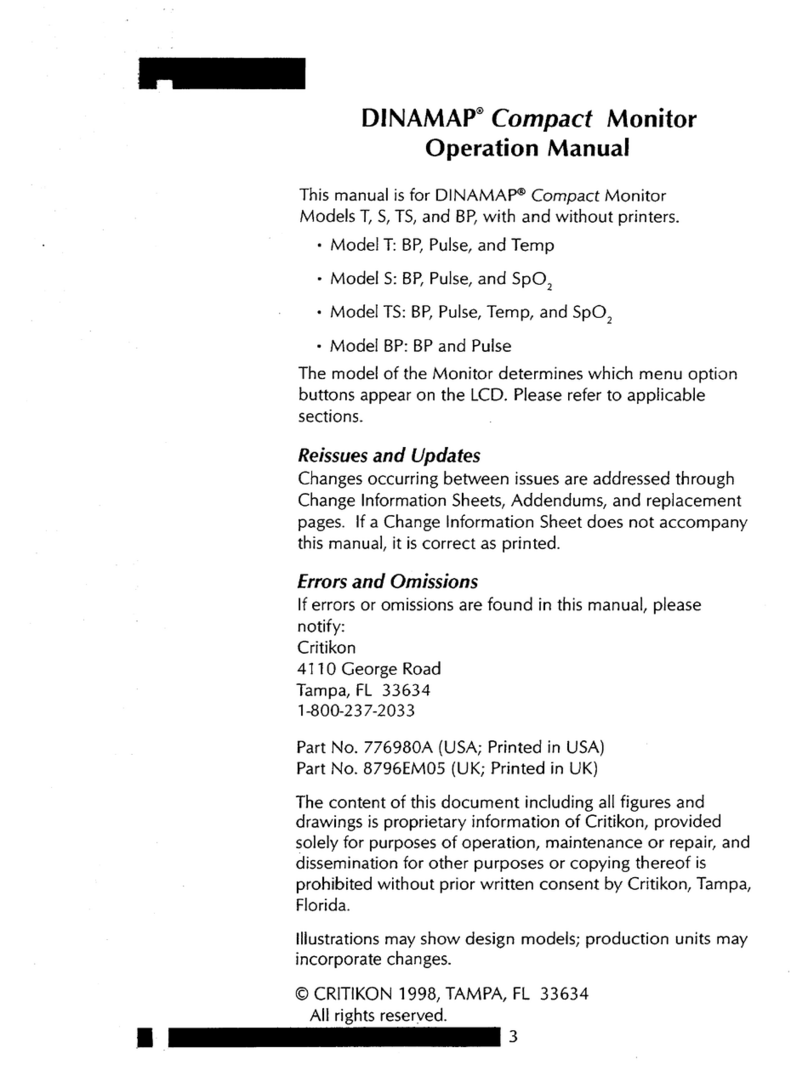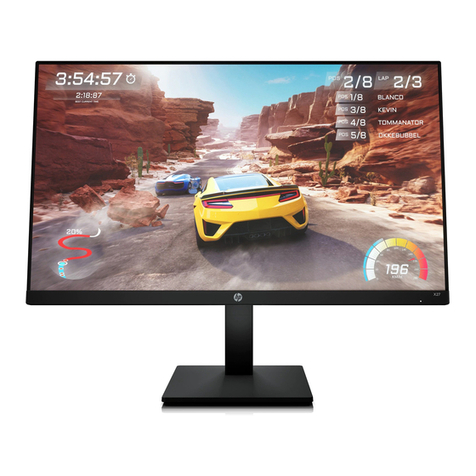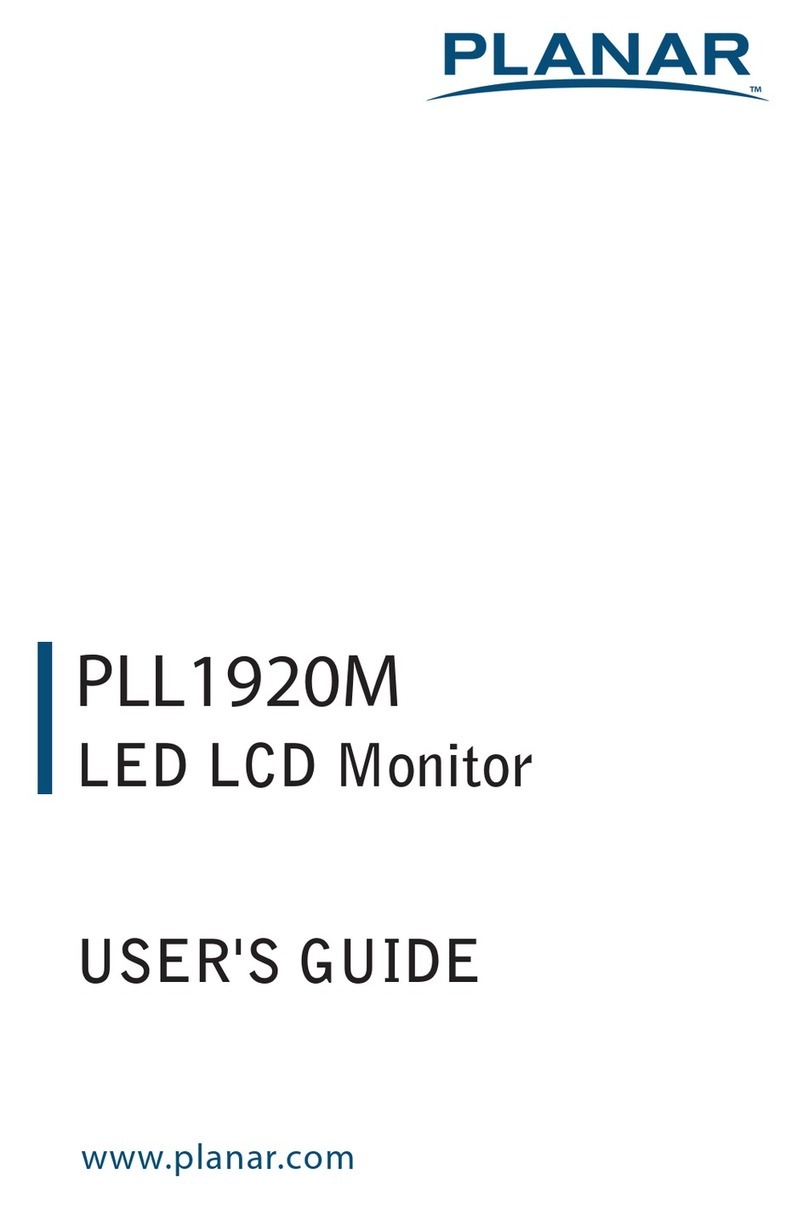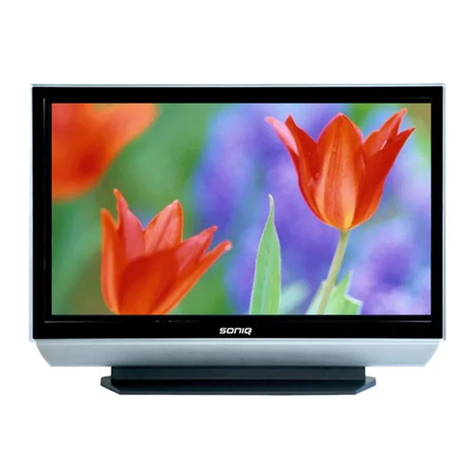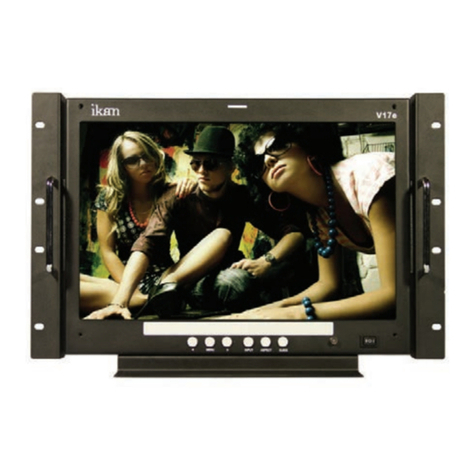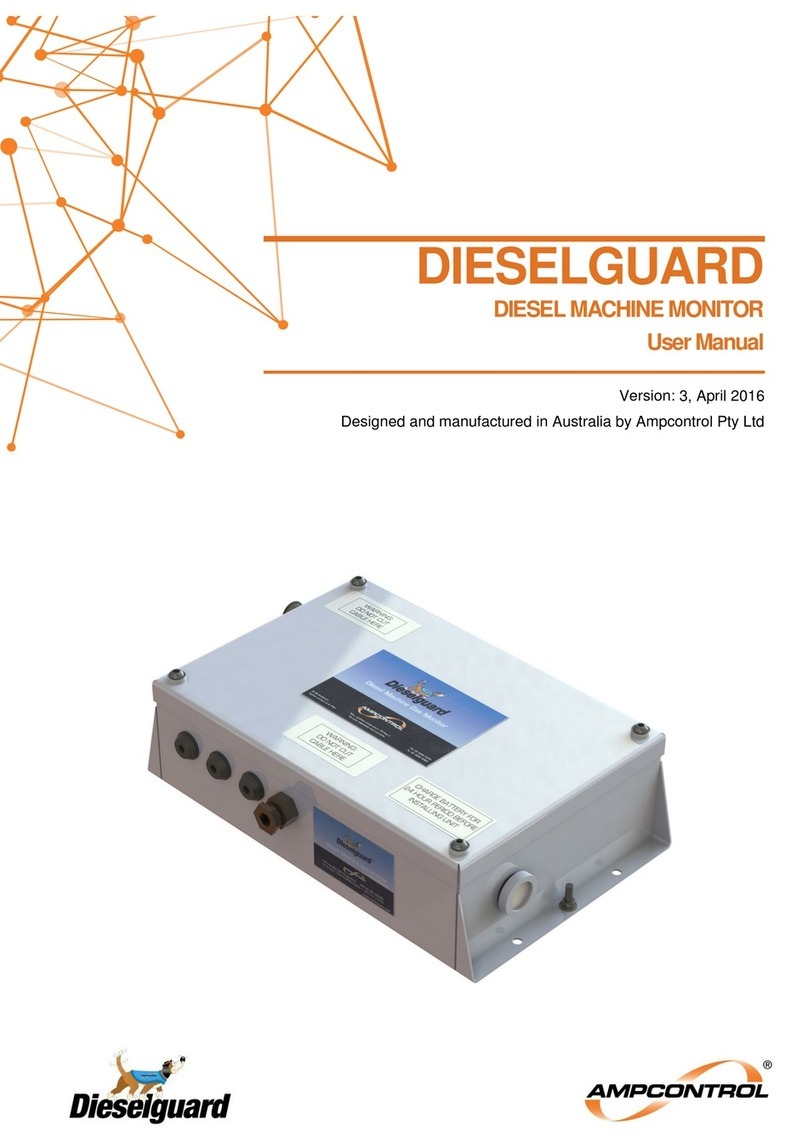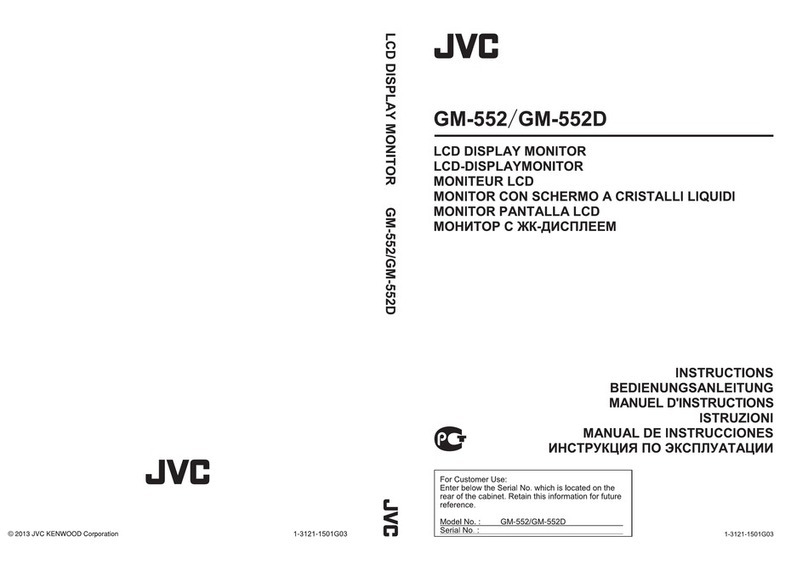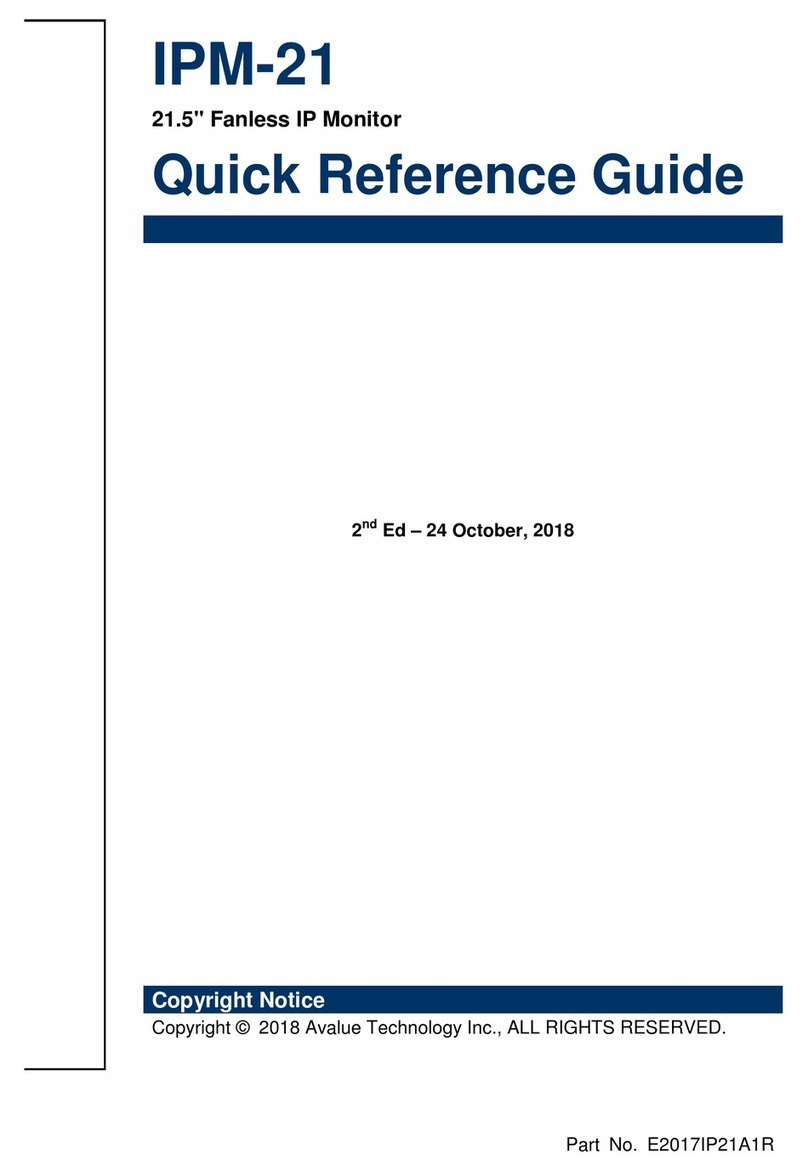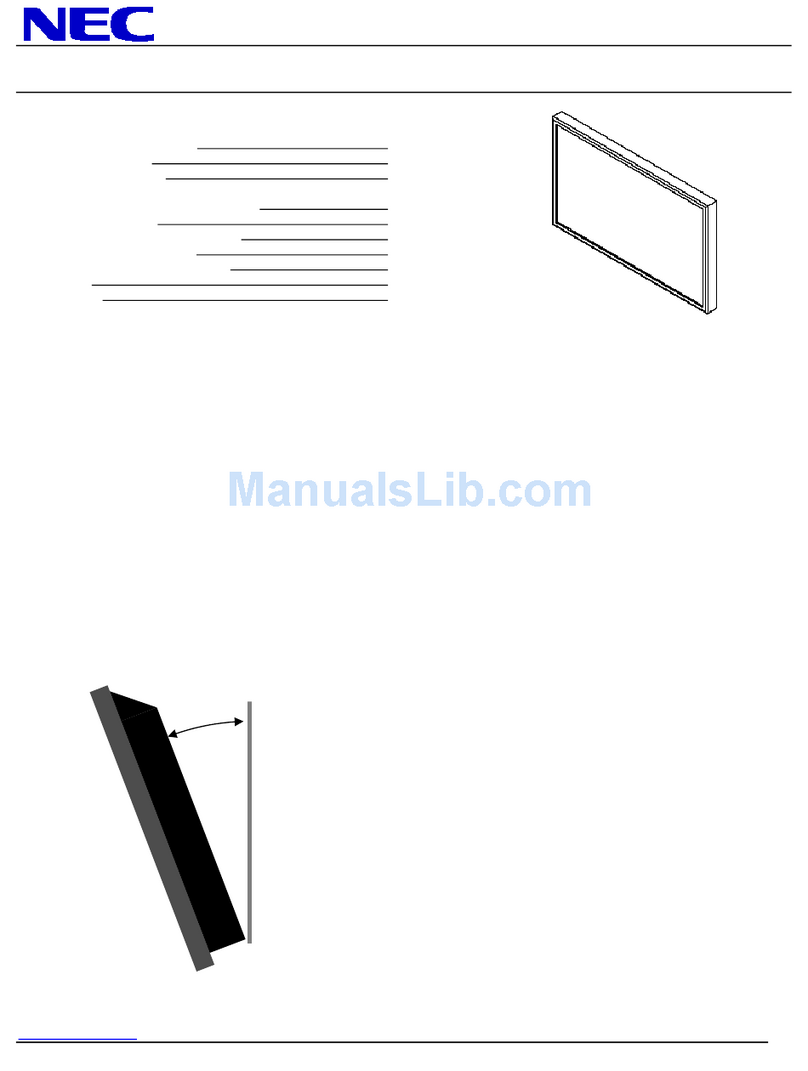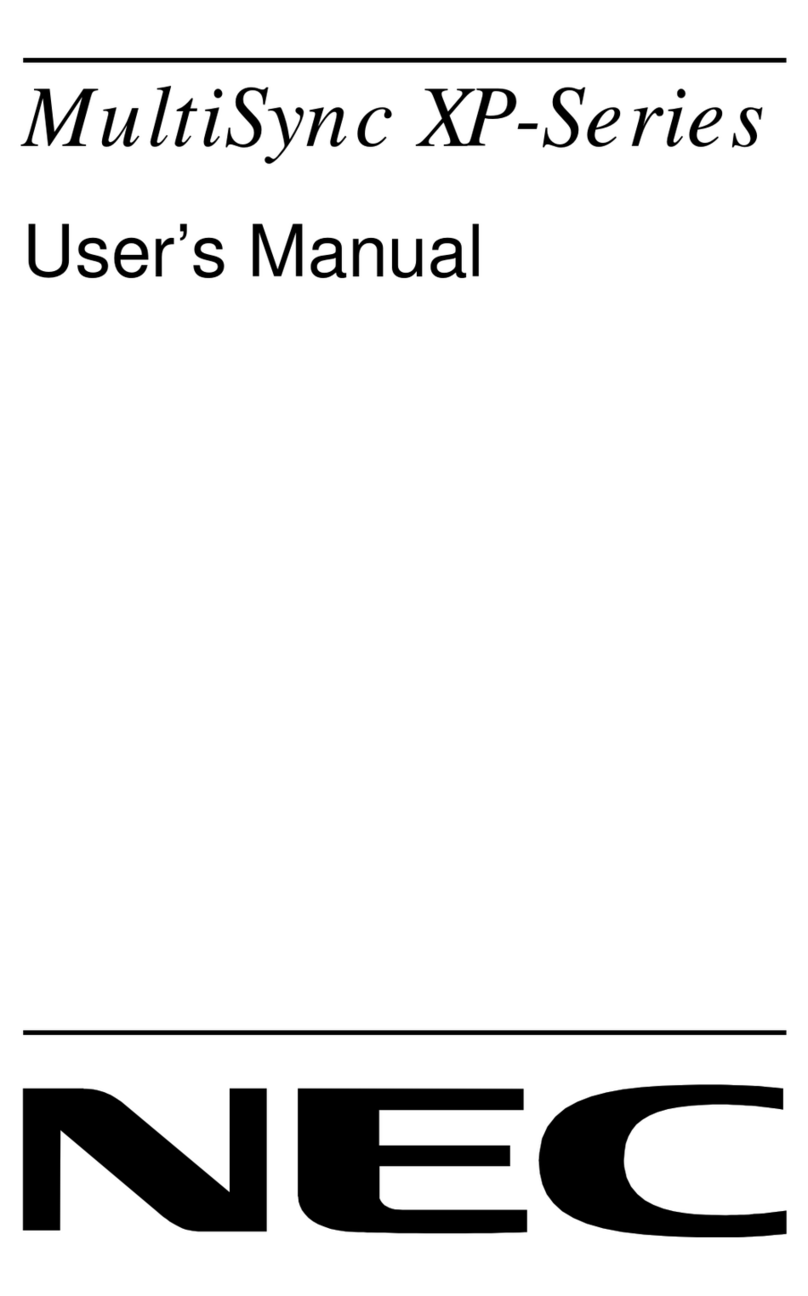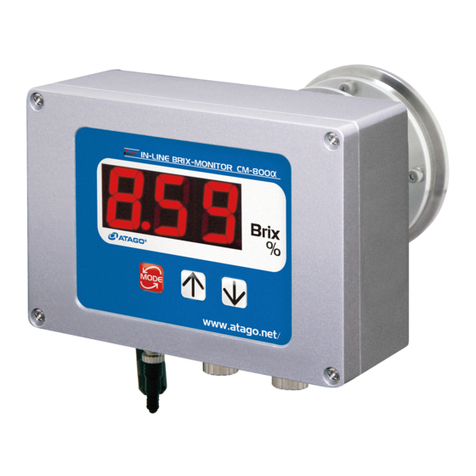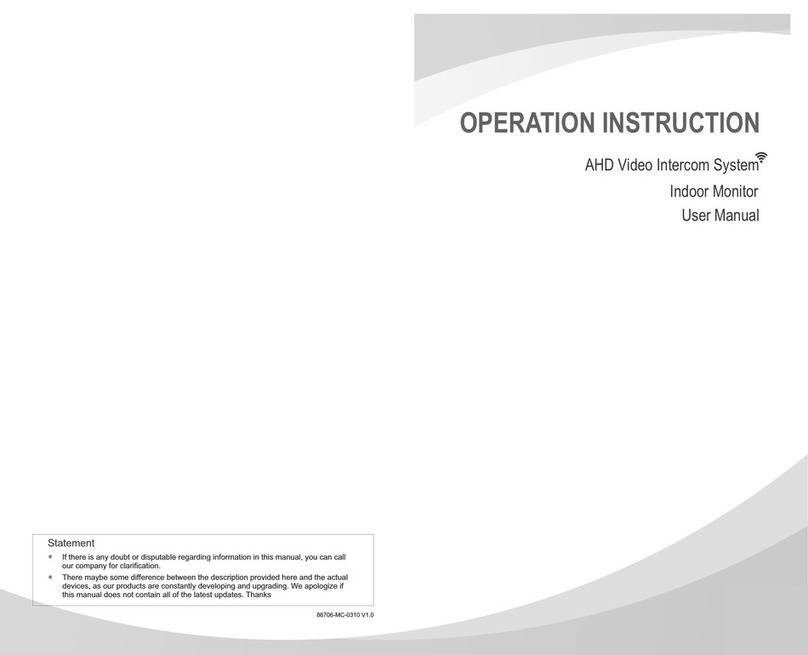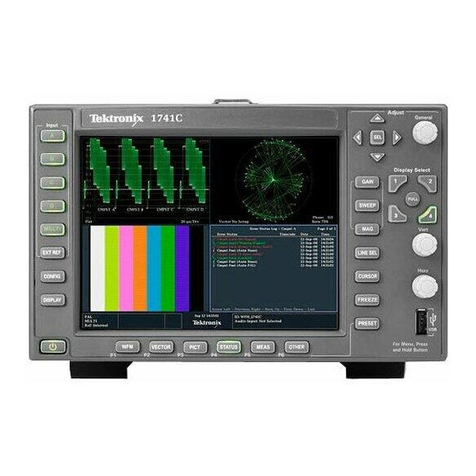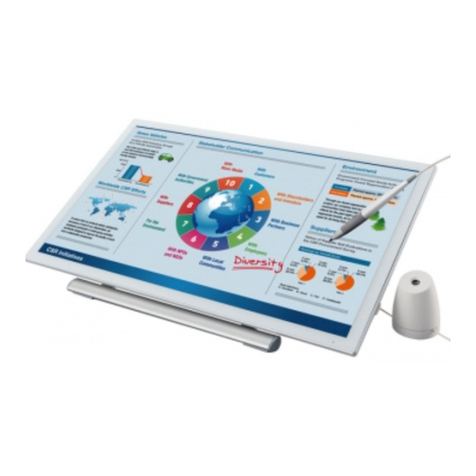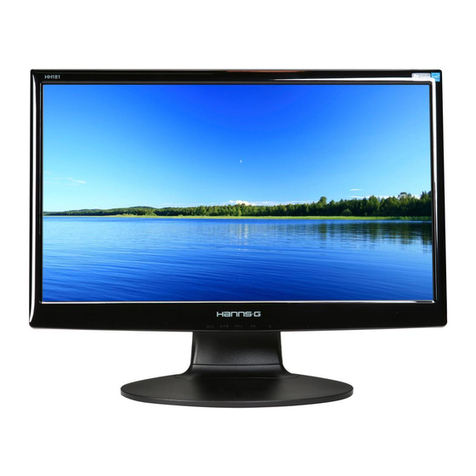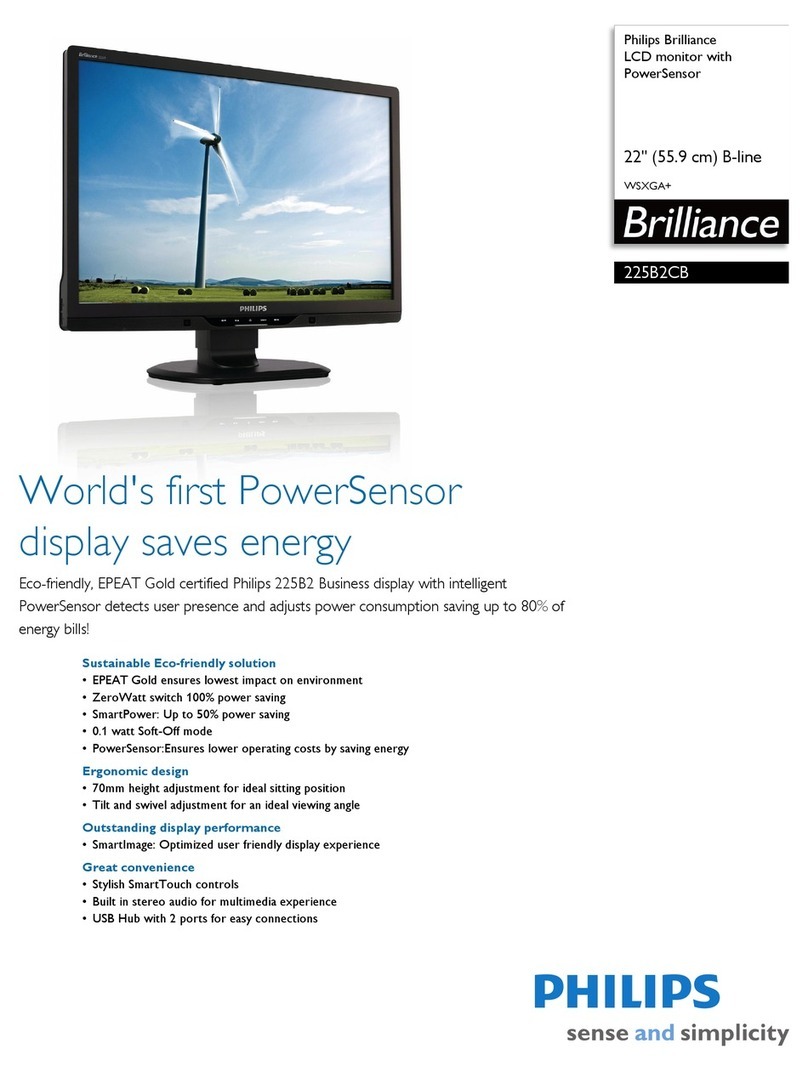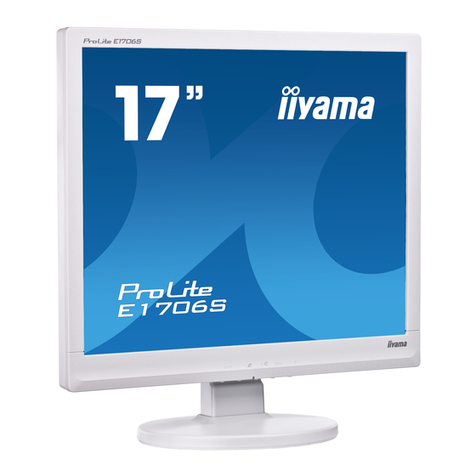Critikon DlNAMAP PRO Series 100-400 User manual

DlNAMAP@
PRO
Series 100-400 Monitor
Operation Manual

SpO,
The model of the Monitor determines which menu option
buttons appear on the LCD. Please refer to applicable
sections.
Reissues and Updates
Changes occurring between issues are addressed through
Change Information Sheets, Addendums, and replacement
pages. If a Change Information Sheet does not accompany
this manual, it is correct as printed.
Errors and Omissions
If errors or omissions are found in this manual, please
notify:
Critikon
Marketing Services
4502 Woodland Corporate Boulevard
Tampa, FL 33614
1-877-274-8456
Part No. 776995C
The content of this document including all figures and
drawings is proprietary information of Critikon, provided
solely for purposes of operation, maintenance or repair, and
dissemination for other purposes or copying thereof is
prohibited without prior written consent by Critikon, Tampa,
Florida.
Illustrations may show design models; production units may
incorporate changes.
SpO,
l PRO 400: BP, Pulse, Temp, and
400, all with printers.
l PRO 100: BP and Pulse
l PRO 200: BP, Pulse, and Temp
l PRO 300: BP, Pulse, and
DINAMAP@
PRO Monitor Models 100,
200, 300, and
Df
NAMAP” PRO Monitor
Operation Manual
This manual is for

.62
Alarms
Button
.........................................................................................................
62
Appendix A
.......................................................................... 63
Technical Specifications
.....
.
..................................................................................
63
.......................................................................................................
58
Error and Warning Messages
..............................................................................
..........................................................................................................................
56
Display Button
........................................................................................................
56
Service Button
........................................................................................................
57
Clinician Menu
Config Button
.........................................................................................................
54
Pwr
Sav
(Sleep
Mode)
...........................................................................................
54
Time
..........................................................................................................................
55
Rotor
SpO2
Button (Models 300 and 400)
..................................................................
54
.__
46
Vitals Button
(UK: All
Obs)
..................................................................................
47
More Button
.........................................................................................................
48
...
Set
BP
Button
(UK:
BP
Mode)
.................
.
...........................................................
48
Alarms Button
.........................................................................................................
49
Trend
Button
............................................................................................................
51
Print Button
..............................................................................................................
53
More
Menu
...........................................................................................................
53
...
..............................................................................
.
...........................
....
Menu Tree
................................................................................................................
46
Main Menu
......................................................................................................................
46
.,..,...,................,.............................................,........................,
..........
34
Procedures
...............................................................................................................
36
Troubleshooting
.....................................................................................................
39
Using the Menu System ...................................................... 43
Introduction
.............................................................................................................
43
Liquid Crystal Display
............................................................................................
43
Rotor
spa*
........
.............
....................
..
............
...
..
.
..
...... ........
........................................................................................................
21
Storage
......................................................................................................................
21
Using the Monitor
............................................................... 23
Noninvasive Blood Pressure Determination
.....................................................
23
Procedures
...................................................................
.
...........................................
27
Manual Mode
.........................................................................................................
29
Auto
Mode
...............................................................................................................
29
Stat
Mode
.................................................................................................................
30
Predictive Temperature
Determination
.............................................................
3 1
Procedures
...............................................................................................................
32
.......................................................................................
16
Front Panel Controls and Indicators
...................................................................
17
Switching the Monitor On
and
Off
....................................................................
19
Liquid Crystal Display (LCD)
...............................................................................
19
Using the Printer
....................................................................................................
20
Installing the Paper
.................................................................................................
20
Printer Alarms
t.he
Monitor
........................................................................
.
...
.
...............
13
Rear Panel Connections.
11
Getting Started
.................................................................... 13
Unpacking
the
Monitor
and
Accessories
............
.
........................
.
....................
13
Power
Sources
..........
.
............................................................................................. 13
Powering
..............................................................................................
.
......................
70
Symbols
DINAMAP@
PRO
Monitor..
................................................................. 7
Product Compliance
..............................................................................................
Contents
Introduction
..........................................................................
7
About
the

G
. . . . . . . . . . . . . . . . . . . . . . . . . . . . . . . . . . . . . . . . . . . . . . . . . . . . . . . . . . . . . . . . . . . . . . . . . .
89
Connection
Details
. . . . . . . . . . . . . . . . . . . . . . . . . . . . . . . . . . . . . . . . . . . . . . . . . . . . . . . . . . . . . . . . . . . . . . . . . . . . . . . . . . . . . . . . . . . . . . . . .
a9
Host
Port Connector
(rear pane)) . . . . . . . . . . . . . . . . . .
. . . . . . . . . . . . . . . . . . . . . . . . . . . . . . . . . . . . . . . . . . . . . . . . . . . . . .
89
.._..._....._..............................................~...................
86
Appendix
86
Disposal of Product Waste . . .
.._...._.....
. . . . . . . . . . . . . . . . . . . . . . . . . . . . . . . . . . . . . . . . . . . . . . . . . . . . . . . . . . . . . . . . . . . . . . . . . . . . . . . . . . . . . . . . . . . . . . .
SpOz
Sensors
. . . . . . . . . . . . . . . . . . . . . . . . . . . . . . . . . . . . . . . . . . . . . . . . . . . . . . . . . . . . . . . . . . . . . . . . . . . . . . . . . . . . . . . . . . . . . . . . . . . . . . . . . . .
84
Storage and Battery Care
. . . . . . . . . . . . . . . . . . . . . . . . . . . . . . . . . . . . . . . . . . . . . . . . . . . . . . . . . . . . . . . . . . . . . . . . . . . . . . . . . . . . . .
a5
Fuses
. . . . . . . . . . . . . . . . . . . . . . . . . . . . . . . . . . . . . . . . . . . . . . . . . . . . . . . . . . . . . . . . . . . . . . . . . . . . . . . . . . . . . . . . . . . . . . . . . . . . . . . .
. . . . . . . . . . . . . . . . . . 86
Calibration . .
. . . . . . . . . . . . . . . . . . . . . . . . . . . . . . . . . . . . . . . . . . . . . . . . . . . . . . . . . . . . . . . . . . . . . . . . . . . . . . . . . . . . . . . . . . . . . . . . . . . . . . . . . . . . . .
86
Leak Testing . .
.._.....................................
. . . . . . . . . . . . . . . . . . . . . . . . . . . . . . . . . . . . . . . . . . . . . . . . . . . . . . . . . .
83
Cleaning the
Monitor . . . . . . . . . . . . .
. . . . . . . . . . . . . . . . . . . . . . . . . . . . . . . . . . . . . . . . . . . . . . . . . . . . . . . . . . . . . . . . . . . . . . . . . . . . . . . .
83
Cuff Cleaning and Disinfection
. . . . . . . . . . . . . . . . . . . . . . . . . . . . . . . . . . . . . . . . . . . . . . . . . . . . . . . . . . . . . . . . . . . . . . . . . . . .
83
Temperature Devices
. . . . . . . . . . . . . . . . . . . . . . . . . . . . . . . . . . . . . . . . . . . . . . . . . . . . . . . . . . . . . . . . . . . . . . . . . . . . . . . . . . . . . . . . . . . . .
84
.._............................,....,.....................
. . . . . . . . . . . . . . . . . . . . . . . . . . . . . . . . . . . . . . . . . .
82
Appendix F
. . . . . . . . . . . . . . . . . . . . . . . . . . . . . . . . . . . . . . . . . . . . . ..*...........................
83
Maintenance
. . . . . . . . . .
._..............................................
. . . . . . . . . . . . . . . . . 82
Packing
Instructions
. . . . . . . . . . . . . . . . . . . . . . . . . . . . . . . . . . . . . . . . . . . . . . . . . . . . . . . . . . . . . . . . . . . . . . . . . . . . . . . . . . . . . . . . . . . . . . .
82
Service Manuals .
_..__...._....,............................................................................................
69
Hierarchy
of
Alarms
. . . . . . . . . . . . . . . . . . . . . . . . . . . . . . . . . . . . . . . . . . . . . . . . . . . . . . . . . . . . . . . . . . . . . . . . . . . . . . . . . . . . . . . . . . . . . . .
70
Appendix C
. . . . . . . . . . . . . . . . . . . . . . . . . . . . . . . . . . . . . . . . . . . . . . . . . . . . . . . . . . . . . . . . . . . . . . . . . .
75
Principles
of
Noninvasive Blood
Pressure
Determination . . . . . . . . . . . . . . . . . . . . . . . . . . . . . . 75
Appendix D
. . . . . . . . . . . . . . . . . . . . . . . . . . . . . . . . . . . . . . . . . . . . . . . . . . . . . . . . . . . . . . . . . . . . . . . . . .
79
Compatibility Table and Reorder Codes
. . . . . . . . . . . . . . . . . . . . . . . . . . . . . . . . . . . . . . . . . . . . . . . . . . . . . . . . . .
79
Appendix E
. . . . . . . . . . . . . . . . . . . . . . . . . . . . . . . . . . . . . . . . . . . . . . . . . . . . . . . . . . . . . . . . ..*.*......
81
Warranty, Service, and
Spare
Parts
. . . . . . . . . . . . . . . . . . . . . . . . . . . . . . . . . . . . . . . . . . . . . . . . . . . . . . . . . . . . . . . . . . . . . 81
Repairs
. . . . . . . . . . . . . . . . . . . . . . . . . . . . . . . . . . . . . . . . . . . . . . . . . . . . . .
:;
Patient Alarms
. . . . . . . . . . . . . . . . . . . . . . . . . . . . . . . . . . . . . . . . . . . . . . . . . . . . . . . . . . . . . . . . . . . . . . . . . . . . . . . . . . . . . . . . . . . . . . . . . . . . . . . . .
69
System Alarms . .
. . . . . . . . . . . . . . . . . . . . . . . . . . . . . . . . . . . . . . . . . . . . . . . . . . . . . . . . . . . . . . . . . . . . . . . . . . . . . . . . . . . . . . . . . . . . . . . . . . . . . .
69
Failsafe Alarm
_...........
. . . . . . . . . . . . . . . . . . . . . . . . . . . . . . . . . . . . . . . . . . . . . . . . . . . . . . . . . . . . . . . . . . . . . . . . . . . . . . . . . . . . . . . . . . . . . . . . . .
66
Power Requirements
. . . . . . . . . . . . . . . . . . . . . . . . . . . . . . . . . . . . . . . . . . . . . . . . . . . . . . . . . . . . . . . . . . . . . . . . . . . . . .
. . . . . . . . . . . . . . .
66
Environmental
. . . . . . . . . . . . . . . . . . . . . . . . . . . . . . . . . . . . . . . . . . . . . . . . . . . . . . . . . . . . . . . . . . . . . . . . . . . . . . . . . . . . . . . . . . . . . . . . . . . . . . . . .
Appendix B
. . . . . . . . . . . . . . . . . . . . . . . . . . . . . . . . . . . . . . . . . . . . . . . . . . . . . . . . . . ..*.............
.._..............__......_.......
64
Mechanical
,.......
.._,.
,......
..,......._,._,....,..,.,......,,.........
.,.........,.....
SpOz
,a
. . . . . . . . . . . . . . . . . . . . . . . . . . . . . . . . . . . . . . . . . . . . . . . . .
IVAC
Temperature
. . . . . . . . . . . . . . . . . . . . . . . . . . . . . . . . .
. . . . . . . . . . . . . . . . 63
.I
BP. . . .
. . . . . . . . . . . . . . . . . . . . . . . . . . . . . . . . . . . . . . . . . . . . . . . . . . . . . . . . . . . . . . . . . . . . . . . . . . . . . . . . . . . . . . . . . . . . . . . . . . . . . . . . . . . . . . . . . . . . . . . . .
63

lndica tions
The PRO Monitor is intended to monitor one patient at the
bedside.
Contraindications
This device is not designed, sold, or intended for use except
as indicated.
Federal law (U.S.A.) restricts this device to sale by or on the
order of a clinician.
Warnings
l Do not use the PRO Monitor in the
presence of
magnetic resonance imaging (MRI)
devices. There
. .
have been reports of sensors causing patient burns
when operating in an MRI environment.
SpO,
All of the main operations of the PRO Monitor are easy to
use. Please review the factory default settings and, where
applicable, enter settings appropriate for your use. The
“Using the Monitor” section of this manual explains how to
use the Monitor in its most simple form, while the “Using
the Menu System” section explains how to customize
measurements by using the menu system.
SpO,
l PRO 400: BP, Pulse, Temp, and
9
PRO 100: BP and Pulse
l PRO 200: BP, Pulse, and Temp
. PRO 300: BP, Pulse, and
400, all with printers.
Gl/endoscopy,
and medical/
surgical units.
The PRO Monitor comes in four different models: PRO 100,
200, 300, and
DC-
operated monitors are primarily intended for use in hospital
acute care settings such as outpatient surgery, accident and
emergency, labor and delivery,
DINAMAP@
PRO Monitors provide noninvasive
determination of systolic blood pressure, diastolic blood
pressure, mean arterial pressure, pulse rate, temperature,
and oxygen saturation. These portable AC- and
DINAMAP
PRO Monitor
Introduction
About the

8-
l Do not use the Monitor in the presence of flammable
anesthetics.
l To help prevent unintended current return paths with
the use of high frequency (HF) surgical equipment,
ensure that the HF surgical neutral electrode is
properly connected.
l To avoid personal injury, do not perform any servicing
unless qualified to do so.
l WARNING: These Monitors should not be used on
patients who are connected to cardiopulmonary
bypass machines.
. If powering the Monitor from an external power
adapter or converter, use only Critikon-approved
power adapters and converters.
l The Monitor does not include any user-replaceable
fuses. Refer servicing to qualified service personnel.
l To reduce the risk of electric shock, do not remove the
cover or the back. Refer servicing to a qualified
service person.
l If the accuracy of any determination reading is
questionable, first check the patient’s vital signs by
alternate means and then check the PRO Monitor for
proper functioning.
Cautions
l Do not use replacement batteries other than the type
supplied with the Monitor. Replacement batteries are
available from Critikon. See Appendix D.
l The PRO Monitor is designed to conform to
Electromagnetic Compatibility (EMC) standard IEC
601-l -2, 1993 and will operate accurately in
conjunction with other medical equipment which also
meets this requirement. To avoid interference
problems affecting the Monitor, do not use the
Monitor in the presence of equipment which does not
conform to these specifications.

-
The electromagnetic compatibility profile of the PRO
Monitor may change if accessories other than those
specified for use with the PRO Monitor are used.
l Trend data are retained in the PRO Monitor when it is
turned off, except when the default is overridden by
selecting the Trend button under the Service menu.
Introduction
Place the PRO Monitor on a rigid, secure surface.
Monitor must only be used with mounting hardware,
poles, and stands recommended by Critikon. See
Appendix D.
The weight of the accessory basket contents should
not exceed 6.6 lb (3 kg).
Arrange the power cord, air hoses, and all cables
carefully so they do not constitute a hazard.
Verify calibration of BP parameter (temp and pulse
oximeter do not require calibration). Ensure that the
display is functioning properly before operating the
PRO Monitor.
Do not immerse the Monitor in water. If the Monitor
is splashed with water or becomes wet, wipe it
immediately with a dry cloth.
Do not gas sterilize or autoclave.
The PRO Monitor, when used with Critikon-approved
applied parts and accessories, is protected against
defibrillator damage.
Notes
l Waveforms may be distorted and readings inaccurate
when electrosurgical cautery equipment is used while
monitoring with the PRO Monitor.

.l
. ALSO EVALUATED TO IEC-601-2-30.
CC
0086
This product conforms with the essential requirements
of the Medical Device Directive. Accessories without
the CE mark are not guaranteed to meet the Essential
Requirements of the Medical Device Directive.
10
DINAMAP@
PRO MONITOR
CLASSIFIED WITH RESPECT TO ELECTRIC SHOCK, FIRE
AND MECHANICAL AND OTHER SPECIFIED HAZARDS
ONLY IN ACCORDANCE WITH CAN/CSA C22.2 NO.
601
C
us
QD
@
IPXl,
degree of protection against ingress of water
l Sterilization/Disinfection, see Appendix F
I,
internally powered
l Transportable
l For continuous operation
l Not suitable for use in the presence of flammable
anesthetics
l Not for use in the presence of an oxygen-enriched
atmosphere (oxygen tent)
l Type BF applied parts
l
IEC
601-l :
l Class
DINAMAP@
PRO Monitor is classified in the following
categories for compliance with
Product Compliance
The

externat DC power connected,
the green external power indicator LED (14) will light to
indicate that external power is being applied and that the
battery is charging. If the battery is not inserted, the external
+5
V
output on the host port connector.
Powering the Monitor
Before the PRO Monitor is used for the first time, the
battery should be charged in the Monitor for at least 8
hours.
Refer to the illustration of the rear panel connections.
Looking at the rear of the PRO Monitor, remove the battery
compartment cover. Insert the rechargeable battery into the
compartment so that the battery terminals fit into the power
clips at the bottom of the compartment. Then replace the
cover. Insert the power cord plug into the mains external
power socket (2) and plug into an AC outlet.
Refer to the illustration of the front panel controls and
indicators. With mains or
auto-
resetable and mounted within the Monitor. These fuses
protect the low voltage DC input, the battery, and the
Getting Started
Unpacking the Monitor and Accessories
Before attempting to use the PRO Monitor, take a few
minutes to become acquainted with the Monitor and its
accessories. Unpack the items carefully, and check them
against the contents checklist enclosed in one of the
accessory boxes. This is also a good time to check for any
damage or shortage. If there is a problem or shortage,
contact Critikon.
It is recommended that all the packaging be retained, in
case the Monitor must be returned for service in the future.
Power Sources
The PRO Monitor is designed to operate from either an
internal lead-acid battery, AC mains or an IEC 601-l
compliant DC power source (see Appendix A). For
replacement rechargeable batteries, please refer to the
Service section of this manual.
The Monitor contains five fuses. Two AC line input fuses
are mounted internally and are replaceable only by qualified
service personnel. The remaining three fuses are

9
For continued safety, use only a power cord of listed type
SJT, three-conductor, min. No. 18 AWG, terminated in a
medical/hospital grade attachment plug, provided with
the following cord tag: “Hospital Grade Plug.” Grounding
14
200
and 500 charge/discharge cycles. When it is necessary to
replace the battery, refer to the “Compatibility Table and
Reorder Codes” listed in Appendix D. To ensure full
charge cycles, replace only with a recommended battery.
If the Monitor is to be stored for some time, first charge
the battery and then remove it and store it separately from
the Monitor.
BAlTERY
IS TOO LOW FOR
MONITOR TO FUNCTION. TURN MONITOR OFF appears.
The Monitor shuts down all functions until it is turned off and
the battery is recharged or replaced. To run the Monitor on
AC power, it must be powered off and then on again.
Battery charging will take place as long as the Monitor remains
connected to an external AC power source. A battery that is
fully discharged can be fully recharged in 1 hour 50 minutes
when the Monitor is switched off or 8 hours if the Monitor is
switched on.
Notes
l To prolong the life of the battery, keep the Monitor
connected to an AC outlet whenever possible. NEVER
allow the battery to become completely discharged. A
fully charged battery will power the Monitor for
approximately 2 hours and should survive between
.,:
During battery-only operation, the yellow battery power
indicator LED (17) will light. When the battery becomes
discharged beyond the low battery threshold, the indicator will
begin to flash, and the Monitor will sound warning beeps
every 30 seconds. At this point, the Monitor should be
connected to an AC outlet to recharge the battery. If the
Monitor continues to be used without charging the battery,
the message WARNING: THE
set).
When the Monitor is running on battery power, a battery icon
appears in LCD area 3 (toggling with the time indicator)
indicating the charge status.
power indicator LED will flash (short flash approx. every 4

Getting Started
integrity can only be maintained when equipment is
connected to an equivalent receptacle marked “Hospital
Grade.”
l Where the integrity of the external earth conductor in the
installation or its arrangement is in doubt, the Monitor must
be operated from its internal battery.
General Caution
Do not touch either the pin of the DC input connector (3)
or the terminals within the battery compartment (1) and
the patient at the same time.
15

(15
way D-type RS-232 serial port) for use only with
equipment conforming to IEC 601-1, configured to
comply with IEC 601-l-l
16
400)
Pole clamp: Used to clamp monitor to pole or stand
Data interface connector: Host communications port
200
and
53’
Rear Panel
Connections
1
2
3
4
5
6
Battery compartment cover: Retains and protects
internal battery
Mains input: Used to connect to AC power supply
External power socket: To be used with approved
Critikon AC-DC power converter ONLY
Inactive temperature cable storage: Inactive temperature
probe cable attaches here (Models
.:::::t:.
l
a**me*oe
l
:gg::gp
**a
l
***e

400) 200
and
“F
display: Indicates whether temperature is being
displayed in degrees Celsius or Fahrenheit (Models
“C
mmHg
10 Temperature probe cover storage: Box of probe covers
stored here (Models 200 and 400)
11 Inactive temperature probe holster: Extra temperature
probe can be stored here (Models 200 and 400)
12 Temperature display: 4-digit red LED indicates measured
temperature (Models 200 and 400)
13
400)
9
Diastolic pressure display: 3-digit red LED indicates
measured diastolic BP in
mmHg
8
Active temperature probe holster: Temperature probe
that is being used stored here (Models 200 and
3-digit red LED indicates
measured systolic BP in
I
16
I
17
18
Front Panel Controls and Indicators
7
Systolic pressure display:
Getting Started
15

.s>
-
18
SpOz
artifact indicator LED: Illuminates when motion
artifact is detected (Models 300 and 400)
25 LCD (liquid crystal display): Displays all alarms, user
interface messages, and configuration options
26 Alarm silence switch: Alternately mutes and enables
audible alarms; when pushed once after alarm sounds
(silence on), switch lights to indicate that audible alarms
have been silenced for 2 minutes
27 AUTO BP key: Press to start Auto BP mode
28 Light sensor: Automatically measures ambient light to set
LED display intensity
29 START/STOP BP key: Press to start or stop a BP, Auto,
Stat, or Vitals determination
30 Cuff connector: BP cuff hose attaches here
% (Models 300 and 400)
24
3-digit red LED indicates oxygen saturation
in
SpOz
display:
SpOz
signals (Models 300 and 400)
21 Rotor: Used to highlight and select items in LCD
menus; if monitor is off, pressing rotor will switch
monitor on
22 Pulse BPM display: 3-digit yellow LED shows pulse rate
in beats per minute
23
SpOz
pulse indicator: Yellow LED in heart symbol flashes
to indicate that real-time pulse rate measurements are
being derived from
mmHg
and shows instantaneous cuff
pressure during BP determination
20
3-digit red LED indicates
measured MAP in
SpOz sensor extension cable
attaches here (Models 300 and 400)
19 Mean arterial pressure display:
SpOz
sensor connector:
14 External power indicator: Green LED indicates external
power status and battery charging status of monitor
15 Temperature probe connector: Temperature probe cable
attaches here (Models 200 and 400)
16 ON/OFF switch: Controls on/off state of monitor; push
for power on and push again for power off
17 Battery power indicator: Yellow LED indicates operation
and charge status of internal battery
18

DINAMAP
PRO Monitor on, push the power
ON/OFF switch (16) or press the rotor (21).
As the Monitor powers up, it will run a short self-test
routine, which will flash all the indicator lights and then
beep the warning speaker. After a few seconds the system
will be ready for operation, as indicated by the appearance
of the main menu on the LCD (25).
To switch the Monitor off, push the power ON/OFF switch
(16) again. This will terminate any measurements that may
be in progress and automatically deflate the cuff.
When the Monitor is operating on the internal battery only,
battery life is enhanced by the use of the sleep mode.
However, the PRO Monitor will not enter sleep mode if an
alarm is active. If no controls are used and no
determinations are being made, the Monitor will enter sleep
mode after a time which can be preset by the operator. All
LED displays will be blanked except for a dash in the far-left
systolic position, and any existing readings will be
transferred to the LCD, which displays the message “Sleep
Mode Active.” Moving the rotor or pressing a key will
“wake up” the Monitor.
liquid Crystal Display (LCD)
MENU AREA
Menu Area
This area displays the name of the menu that has option
buttons available for selection. Normal text in the menu
area appears dark on a light background, while the text of
@
To switch the
Getting Started
Switching the Monitor On and Off

_
.Source 2: Last three BP readings
. Source 3: Error and warning messages
Note: Refer to “Display Button” in the “Using the Menu
System” section for instructions on setting Area 2.
Area 3
This area displays the time, the time lapsed since the last Auto
BP determination (if in Auto BP mode), the battery icon (if
operating on battery power, the time and battery icon toggle),
and the BP and Printer modes.
Using the Printer
Installing the Paper
Turn the PRO Monitor so that the side is facing you. While
grasping the side of the Monitor, firmly press the notched
indentations on the printer door to open it. The printer door will
pop open. With the Monitor powered on, place the roll of paper
into the compartment so that the end of the paper comes off
the top, and thread it between the two printer plates. As the
paper touches the plates, the paper will begin to auto-feed itself
into the printer. Feeding the end of the paper strip through the
slot in the door, firmly press the notched indentation on the side
of the printer door to close it. Use the paper release lever to clear
a paper jam or manually feed the paper.
Note: Make sure that the roll of paper is tightly wound.
SpO, plethysmograph (Models 300 and 400)
data
from one of three different sources.
l Source 1:
selected buttons appears light on a dark background.
Note: Some menus have six option buttons. In these cases, there
is no space available to display the menu title.
Area 2
This area displays

.
placed in contact with adhesives, adhesive tapes, or
plasticizers such as those found in all PVC page protectors.
80%,
or
“C
or relative
humidity over
OF/38
.exposed to temperatures over 100
to direct sunlight,
DINAMAP
PRO
header to be printed, thereby confirming that the paper is
installed correctly and that the printer is operational. The message
next to “PRNT” in Area 3 of the LCD will change to “Auto” or
“Manual” to identify the operating mode of the printer. After
power-off, the operating mode of the printer returns to the
previous user-selected setting (Auto or Manual) unless specified
otherwise in the Print button under the Service Button.
Storage
Store thermal paper in a cool, dry place. The printed strip
(thermal paper recording) should not be
exposed
-
No Paper” will appear in Area 2 of the LCD and an audible
alarm will sound. In addition, the message “No Paper” will
appear next to “PRNT” in Area 3 of the LCD. To clear the
alarm, press the rotor. The message in Area 3 of the LCD will
remain until new paper is installed and the printer door is
closed. (See “Using the Menu System.“)
Installing new paper will cause the Critikon
DINAMAP@
PRO name on it. If no print is
visible on the paper, check that the paper roll has been
installed in the correct position (refer to diagram). To tear off
the printout, use a slight sideways action to pull the paper
sharply up across the serrated edge of the door.
Printer Alarms
If the Monitor is
the printer door switched on with no paper installed or with
open, the message “No Paper” will appear
next to “PRNT” in Area 3 of the LCD. When new paper is
installed and the printer door is closed, the message will
change to “Manual” for Manual print or “Auto” for Auto print,
depending on the status before the paper change.
If the paper runs out during a print request or if an attempt is
made to print when no paper is installed, the message “Printer
Getting Started
Any time the paper is loaded, the printer automatically prints a
test strip with the

&ions
l The paper is thermally activated; therefore, do not store it in a
hot place as discoloration may result.
l Use only replacement paper rolls (58 mm) from Critikon.
22
i
Ca
Note: When in doubt about long-term storage conditions, store a
photocopy of the thermal paper recording.

h
F
23
”
?-%
5
minutes.
Vitals (UK: All Obs) determinations are started by
selecting the Vitals (UK: All Obs) button in the Main
menu. (Refer to the “Using the Menu System” section.)
Selection of this button initiates a BP determination
Blood Pressure Determination
Description
The BP parameter is included in Models 100, 200, 300, and
400. Blood pressure is monitored noninvasively in the
PRO Monitor by the oscillometric method, which measures
the amplitude of the pressure oscillations within the blood
pressure cuff. Further information about the oscillometric
method is in Appendix C.
The PRO Monitor has four BP modes: 1. Manual,
2. Auto, 3. Stat, and 4. Vitals (UK: All Obs). The mode,
which is selected by the user, is shown on the LCD (25).
The BP measurements are automatic, and once the cycle is
complete the LED displays (7, 9, 19, 22) show systolic
pressure, diastolic pressure, mean arterial pressure, and
pulse rate.
1.
2.
3.
4.
Manual BP determinations are started by pressing the
START/STOP BP key (29). In the Manual mode, the
blood pressure is determined one time.
Auto BP determinations are started by selecting the
AUTO BP key (27) or the Auto button under the Set BP
(UK: BP Mode) button in the Main menu.
When Auto mode is selected, a number at the right of
the Auto button indicates the time interval between each
reading. To change the time interval, choose the box
around the number and turn the rotor until the desired
interval is reached. The interval can be set between 1
and 120 minutes (1, 2, 3, 4, 5, 10, 15, 20, 25, 30, 45, 60,
90, and 120 minutes). Press the rotor to confirm the
setting.
Stat determinations are started by selecting the Stat
button under the Set BP button (UK: BP Mode) in the
Main menu. In the Stat mode, the blood pressure is
determined as many times as possible in
Using the Monitor
Noninvasive

SpOz
and predictive temperature
determinations to be monitored and recorded
(depending on Monitor model). In the Vitals (UK: All
Obs) mode, the blood pressure is determined one time.
Before each BP determination, the Monitor performs a test
to ensure that the cuff pressure is below a specified level.
The determination is delayed until this condition is met.
During the delay, the BP values are displayed as zero.
The Monitor senses the type of hose being used and
automatically uses adult/pediatric monitoring parameters or
neonatal monitoring parameters, as appropriate.
Audible and visible alarms occur when a value for systolic
pressure, diastolic pressure, mean arterial pressure, or pulse
rate is outside the selected high or low limit.
Instructions for cleaning and disinfecting BP cuffs are in
Appendix F.
Genera/ Warnings
l The PRO Monitor will not measure blood pressure
effectively on patients who are experiencing seizures
or tremors.
l Arrhythmias will increase the time required by the
PRO Monitor to determine a blood pressure and may
extend the time beyond the capabilities of the
Monitor.
l In Manual mode, the PRO Monitor displays the results
of the last blood pressure determination for 2 minutes
or until another determination is completed. If a
patient’s condition changes between one
determination and the next, the Monitor will not
detect the change or indicate an alarm condition.
l
Devices that exert pressure on tissue have been
associated with purpura, skin avulsion, compartmental
syndrome, ischemia and/or neuropathy. To minimize
these potential problems, especially when monitoring
at frequent intervals or over extended periods of time,
make sure the cuff is applied appropriately and
-24
while allowing
This manual suits for next models
4
Table of contents
Other Critikon Monitor manuals
